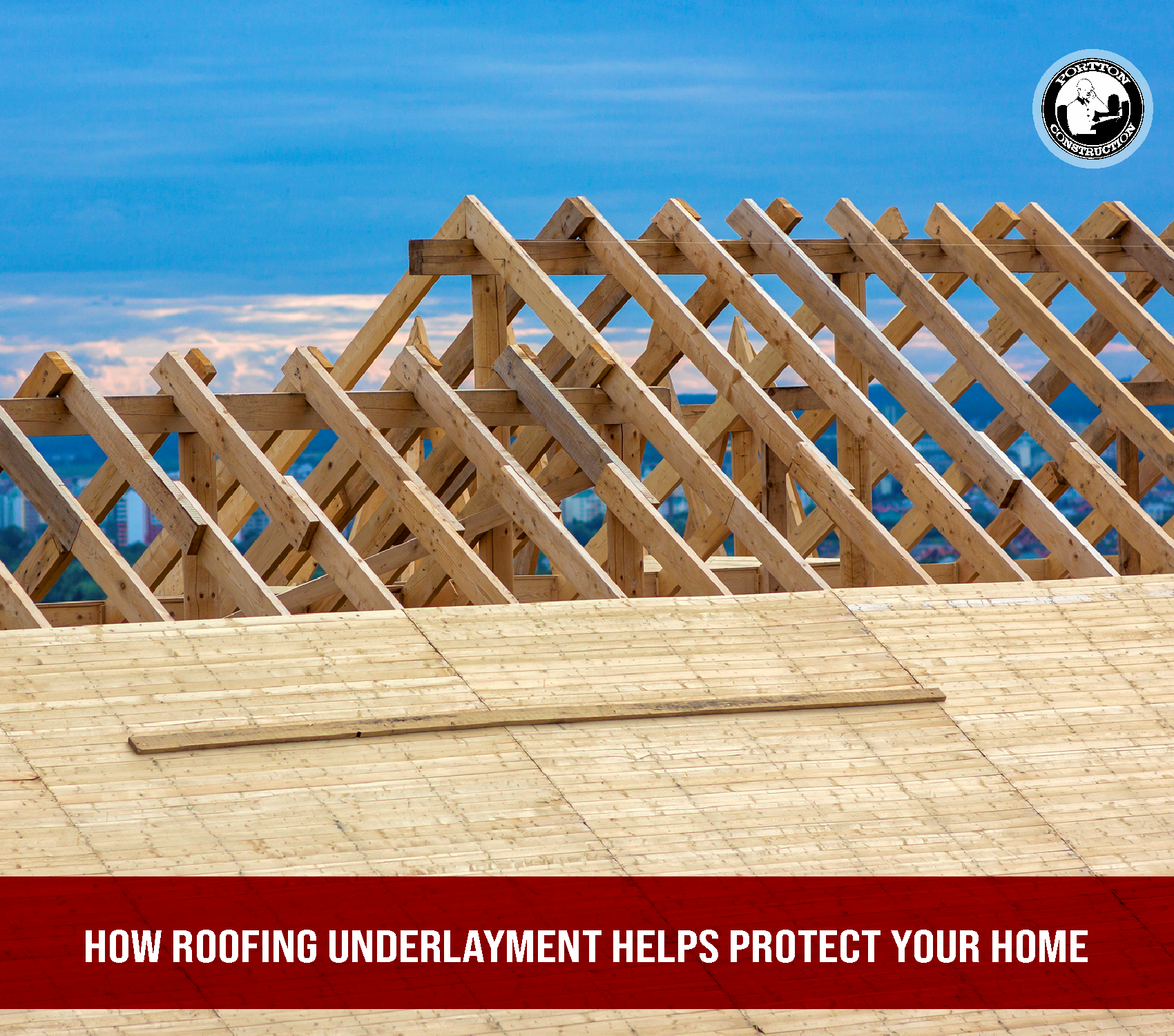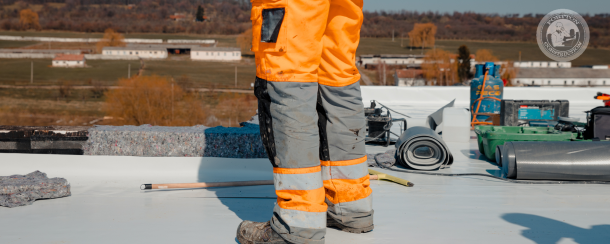HOW ROOFING UNDERLAYMENT HELPS PROTECT YOUR HOME
ROOFING IN HOUSTON
Every homeowner knows how important a roof and its supporting components are to the structural integrity and overall beauty of their home — a roof helps keeps inclement weather at bay and protects the attic space, which allows for sufficient ventilation while insulating your home from the cold in the winter and excessive warmth in the summer.
A sturdy roof goes beyond shingles. Find out more information about underlayment, an important layer of your roof that helps keep it dry and protected from the elements.
WHAT IS ROOFING UNDERLAYMENT?
Roofing underlayment is a barrier material that’s typically installed directly onto your roof deck. Depending on how your home was constructed, the skeleton of your roof is made up of rafters or trusses.
The roof deck, also sometimes called roof sheathing, might be:
Plywood
OSB, or
Step sheathing
These boards are fastened onto the rafters or trusses to help stabilize the rafters or trusses and give structure to the entire roof.
Underlayment layers in the roofing system
The roofing underlayment is what goes on top of this sheathing material. It offers a secondary layer of protection from moisture intrusion should any water get under your shingles.
TYPES OF ROOFING UNDERLAYMENT
In general, there are three types of roofing underlayment: felt, self-adhered, and synthetic. Each has its own benefits and advantages, and the type you choose generally depends on what your roofing contractor is comfortable with and your local building codes and regulations.
Felt Underlayment
This is one of the oldest types of roofing underlayment. It’s commonly referred to as tar paper or felt paper. It’s made of an organic mat or paper that has been saturated with asphalt to help with water resistance.
Felt underlayment is generally available as two standard weights:
15 pounds per hundred square feet or No. 15 felt
30 pounds per hundred square feet or No. 30 felt
For lightweight projects, No. 15 felt can be acceptable. However, it does tear easily, and if exposed to the elements during installation, can absorb water and wrinkle.
For homeowners who opt for felt underlayment, contractors may recommend No. 30 felt, which is more durable than No. 15 felt. As with any of the underlayment products, it can be applied in multiple layers for more protection.
Some roofing contractors commonly use felt underlayment when working with slate or tile shingles, while others may prefer self-adhered underlayment. It can depend on the region of the country.
Self-Adhered Underlayment
This kind of underlayment contains high percentages of asphalt and rubber polymers, making it a water-resistant solution for roofing underlayment.
Self-adhered underlayments have a sticky back, so they can adhere to the roof deck. This sticky backing helps create a waterproof seal between the roof deck and the underlayment. This type of underlayment is designed to protect the roof from damage where water tends to collect or where penetration in the roof deck exists.
Examples of these leak-prone areas include:
Eaves
Valleys
Vents
Chimneys, and
Skylights
Self-adhered underlayments are very useful in regions that receive severe winter weather.
The upper surface of this type of roofing underlayment may contain granulated, polyethylene, or polyester materials to provide weather-resistant benefits. It also creates a non-skid surface, designed to make it safer for roofers to install, as it might be easier for them to walk around on.
Synthetic Underlayment
Within the last decade or so, synthetic underlayment has been a popular option for homeowners. While materials may vary by manufacturer, most synthetic roofing underlayment is comprised of multiple layers of various polymers woven together.
Synthetic underlayments typically have several advantages.
Tough, durable and tear-resistant
Lighter, with more coverage per roll (in comparison to most other types of underlayment products), reducing ladder trips
Secure walking surface
Clear, delineated lines and overlap guides for enhanced installation
Repels water and is inert to mold
WHY IS ROOFING UNDERLAYMENT NECESSARY?
In the never-ending battle against the elements that homeowners and contractors wage, your shingles are certainly your first line of defense. Shingles can help reflect the sun’s rays, obstruct precipitation, and withstand high winds.
However, roofing underlayment adds a second layer of protection that:
Safeguards your roof should your shingles tear-away due to high winds
Helps protect your roof deck from damage caused by ice dams during cold weather snaps
Shields your roof from bad weather during the installation process, prior to shingle attachment
To meet local building codes, your home’s roofing system must include a roofing underlayment product and roof covering. Additionally, shingle manufacturers require an underlayment as part of their warranty
FIND A ROOFING CONTRACTOR NEAR YOU
Whether you’re considering a re-roof project because your home’s roof is aging, or you’re embarking on a new construction project, a roofing contractor can help answer specific questions you have about underlayment, sheathing types and other materials that help keep your home shielded from wind and weather.
🔨Let us find the solution that works best for you and your roofing needs.
Contact us: 🌐https://bit.ly/3olidtu | 📞(832) 207-3537 | (832) 498-5178

Source: PCI
Portton Construction Inc: We are a General Contractor in Houston and surrounding areas. With over 15 years of experience in the industry, we provide general contractor needs for all domestic markets. In need of a home makeover? Look no further! We provide services in all areas of home remodeling.
INSULATION IN HOUSTON
roof in Houston, roof service in Houston,roof repLacements in Houston, roof installations in Houston, roof repairs in Houston, roof maintenance in Houston, roof restoration in Houston, roof leaks in Houston, roof inspection in Houston, roof financing in Houston, roof coatings in Houston, residential roof in Houston, residential roof service in Houston, residential roof repLacements in Houston, residential roof installations in Houston, residential roof repairs in Houston, residential roof maintenance in Houston, residential roof restoration in Houston, residential roof leaks in Houston, residential roof inspection in Houston, residential roof financing in Houston, residential roof coatings in Houston, commercial roof in Houston, commercial roof service in Houston, commercial roof repLacements in Houston, commercial roof installations in Houston, commercial roof repairs in Houston, commercial roof maintenance in Houston, commercial roof restoration in Houston, commercial roof leaks in Houston, commercial roof inspection in Houston, commercial roof financing in Houston, commercial roof coatings in Houston






